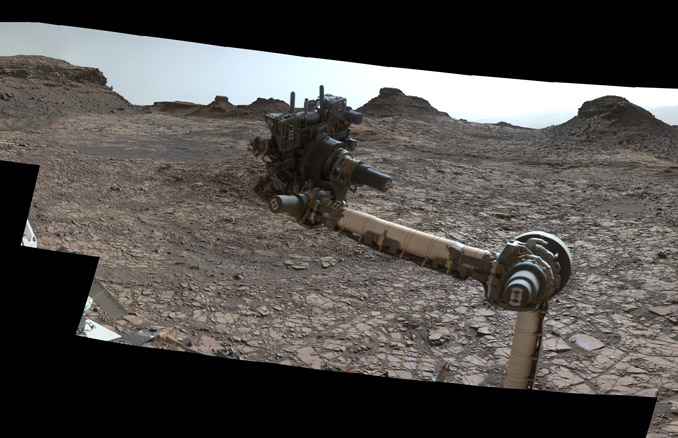
NASA’s Curiosity Mars rover acquired this 360-degree panorama as it neared features called “Murray Buttes” on lower Mount Sharp.
The view combines more than 130 images taken on 5 August 2016, during the afternoon of the mission’s 1,421st sol, or Martian day, by Mastcam’s left-eye camera. This date also was the fourth anniversary of Curiosity’s landing.
The dark, flat-topped mesa seen to the left of Curiosity’s robotic arm is about about 90 metres from the rover’s position. It stands about about 15 metres high. The horizontal ledge near the top of the mesa is about 60 metres across. An upper portion of Mount Sharp appears on the distant horizon to the left of this mesa.

The relatively flat foreground is part of a geological layer called the Murray formation, which formed from lakebed mud deposits. The buttes and mesas rising above this surface are eroded remnants of ancient sandstone that originated when winds deposited sand after lower Mount Sharp had formed. Curiosity closely examined that layer – the Stimson formation – during the first half of 2016 while crossing a feature called “Naukluft Plateau” between two exposures of the Murray formation.
The buttes and mesas of Murray Buttes are capped by material that is relatively resistant to erosion, just as is the case with many similarly shaped buttes and mesas on Earth. The informal naming honours Bruce Murray (1931-2013), a Caltech planetary scientist and director of NASA’s Jet Propulsion Laboratory, Pasadena, California.
The scene is presented with a colour adjustment that approximates white balancing, to resemble how the rocks and sand would appear under daytime lighting conditions on Earth.



